In 2021 the Chinese Australian Family Historians of Victoria Inc. (CAFHOV) launched a fascinating new resource, the Victorian CEDT index. This online resource indexes three registers of applications for Certificates Exempting from Dictation Test (CEDT), covering the years 1904-1959. It’s of great significance to both family and social historians, providing important information on the 13,000 `non-white’ or ‘non-European’ people who lived in Victoria and applied for a CEDT between 1904 and 1959.

What was the dictation test?
On 23 December 1901 the Commonwealth Government passed the Immigration Restriction Act. Often regarded as the foundation of Australia’s White Australia policy, the Act was created to stop the immigration of non-Europeans to Australia by placing ‘certain restrictions on Immigration and to provide for the removal from the Commonwealth of prohibited Immigrants’. 1 One provision of the act saw prospective migrants being required to complete a 50 word dictation test in a language chosen by customs officers (initially any European language, but after 1905 any prescribed language). Those who failed were deemed to be ‘prohibited immigrants’ and could be deported from Australia. Although the test could be given to anyone, in practice authorities were instructed to only administer the test to ‘non-white’ arrivals. 2
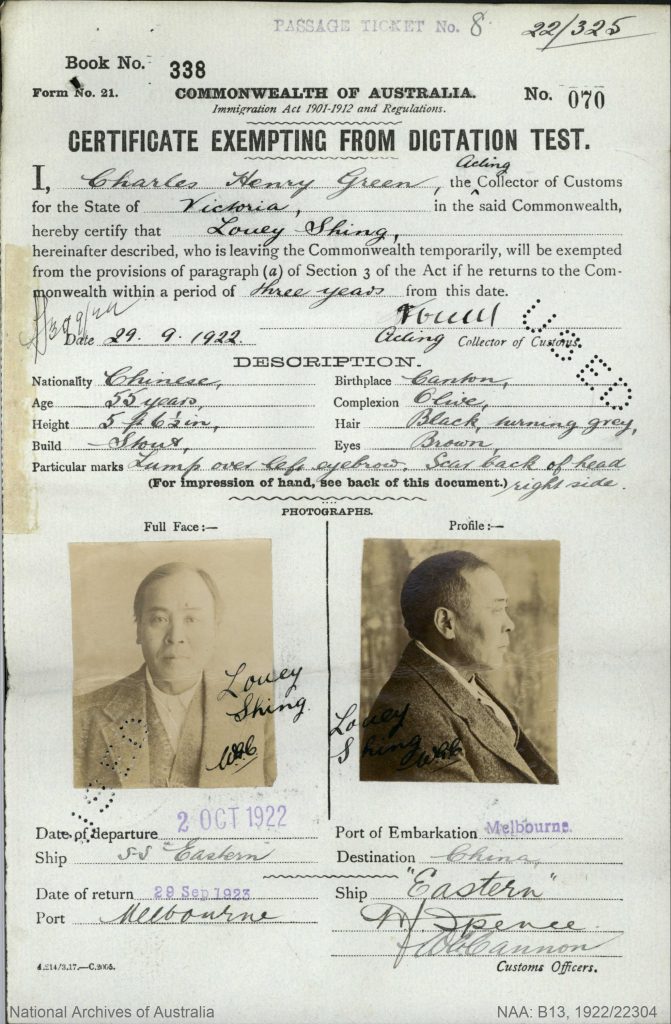
(click to enlarge)
Exemptions to the dictation test
‘Non-white’ migrants who had lived in Australia for more than five years and who wanted to travel overseas could apply for a Certificate Exempting from Dictation Test (CEDT). This certificate allowed them to travel overseas for up to three years (with extensions available) and return to Australia without having to sit the test. 3
The names of people who applied for a CEDT appear in the Registers of Certificates Exempting from the Dictation Test (Departures), Melbourne, (National Archives of Australia, series number B6003). These registers were used by officials to track CEDT applications and certificate and to also follow the movements of CEDT holders. They ‘were just one part of an extensive national system, used to administer the Immigration Restriction Act‘ 4
The registers list an individual’s name, age, nationality, occupation, residence, period of residence, date of departure and date of return. Over 90% of the people listed were Chinese, however people with Indian, Japanese or Syrian ancestry are also included. 5
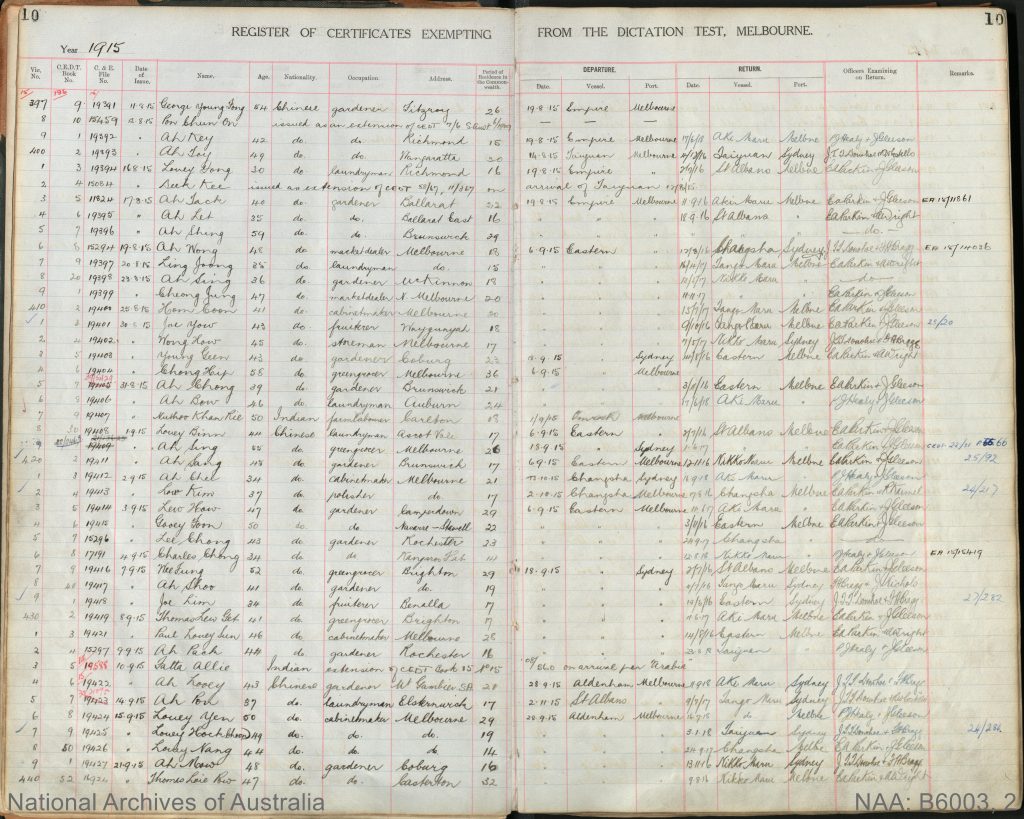
National Archives of Australia. 1915. Register of Certificates Exempting from the Dictation Test (Departures), Melbourne. Image courtesy of the National Archives of Australia, NAA: B6003. (click to enlarge)
The development of the Victorian CEDT index
Recognising the importance of these records, CAFHOV developed a project to create an online index to the registers. With the permission of the National Archives of Australia, CAFHOV photographed the registers and crowdsourced a team of volunteers to work on transcribing the content. Thanks to the extraordinary dedication and passion of the transcribers, it took only three weeks to transcribe over 13,000 records – considerably less time than the thirty weeks they had originally estimated. 6
Funding from the Local History Grants Program helped CAFHOV to develop the online database and Victorian CEDT index website. Here you can access the online index, find a collection of stories relating to people in the index and access visualisations displaying data on the journeys made.
The index can be searched by name, age, nationality, occupation, residence and year, or by keywords that appear anywhere in the record. For example, a search for the name Leong Sam retrieved the following results and includes links (on the right hand side) to the relevant digitised page of the register.
Advanced search options are also available, making it possible to add additional search criteria and narrow results down. Here is a search for individuals who had Indian nationality and worked as Hawkers.
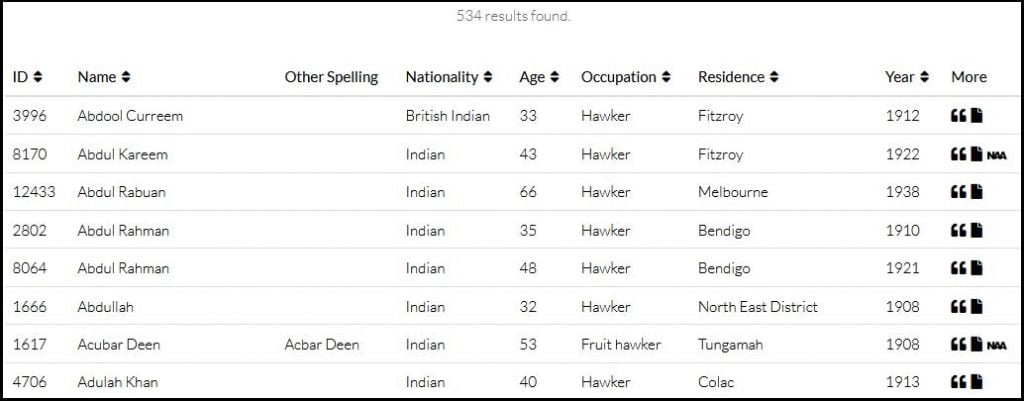
Copies of surviving CEDTs and application documents can be found in correspondence files created by the Collector of Customs, Melbourne. (National Archives of Australia, series number B13). These documents contain a wealth of information including photographs, hand prints, character references and additional correspondence. Many of these records have been digitised and can be viewed through the National Archives of Australia website.
Here are three examples of the CEDT application forms. Click on each image to enlarge it or click on the citation link to open the full application file.
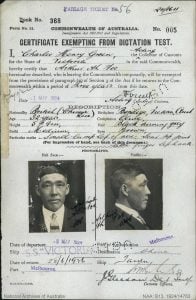
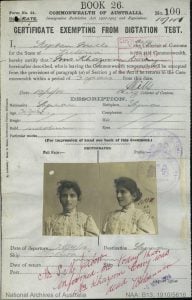
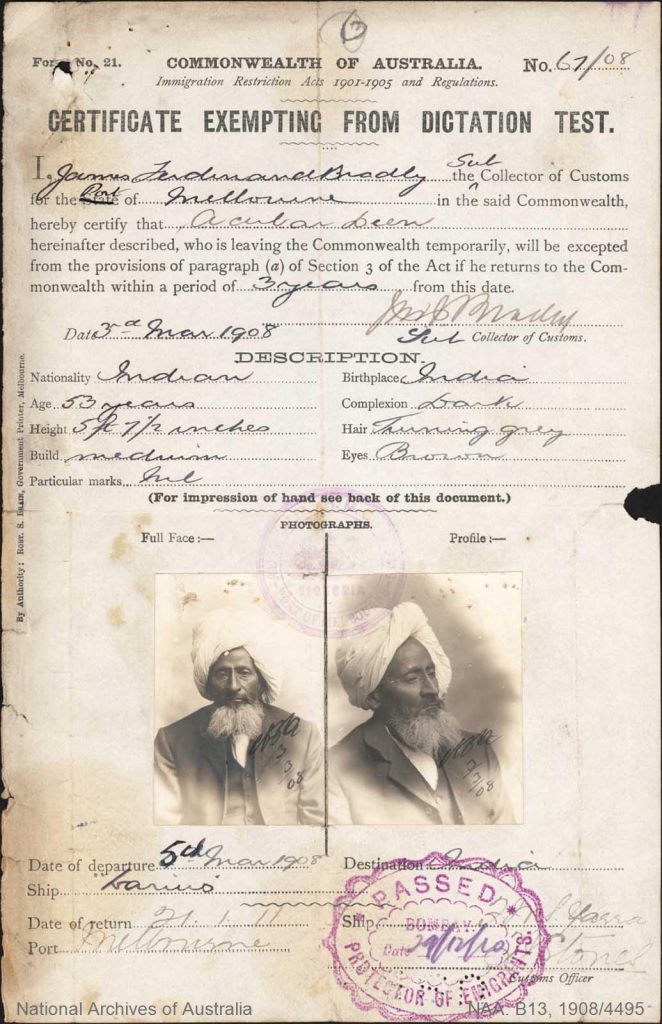
Acuban Deen, Indian Hawker. Application for Certificate exempting from dictation test. Image courtesy of the National Archives of Australia, NAA: B13, 1908/4495.
CAFHOV recently won the Local History Project award at the 2021 Victorian Community History Awards – presented by the Public Record Office Victoria in partnership with the Royal Historical Society of Victoria. Congratulations CAFHOV, both on winning the award and for completing the CEDT index. It’s a fabulous resource which will be of great value to many researchers.
Further reading
Further information on the significance of the CEDT registers can be found on historian Sophie Couchman’s blog – What are these Victorian CEDT registers and why do they matter?
Williams, M., & ProQuest. 2021, Australia’s dictation test : the test it was a crime to fail (eBook). Leiden ; Boston: Brill.
State Library Victoria, Researching your Chinese Victorian ancestors blog post.
References
- Australian Government, 1901, Federal Register of Legislation. Immigration Restriction Act, 1901. Viewed 23 December 2021.
- Chinese Australian Family Historians of Victoria, 2021, Victorian CEDT Index – About, viewed 23 December 2021.
- Chinese Australian Family Historians of Victoria, 2021, Victorian CEDT Index – About, viewed 23 December 2021.
- Chinese Australian Family Historians of Victoria, 2021, Victorian CEDT Index – About, viewed 23 December 2021.
- Chinese Australian Family Historians of Victoria, 2021, Launch of the Victorian CEDT Index, 22 June 2021, viewed 23 December 2021.
- Young, T. (Chinese Australian Family Historians of Victoria), 2021. How did we transcribe these records? viewed 23 December 2021.



What a wonderful resource!